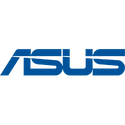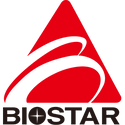
ASUS Teases ROG Zephyrus S17 and M16 "Tiger Lake-H" Notebooks
Ahead of its launch later this month, notebook OEMs are beginning to tease their upcoming gaming notebooks powered by 11th Gen Core "Tiger Lake-H" mobile processors that come in core counts of up to 8. ASUS will be hosting a media event tomorrow (May 11) launching its first "Tiger Lake-H" notebooks, which probably follows Intel's own public unveiling of the new processors. The teaser video to the ASUS event reveals at least two notebooks under the company's ROG Zephyrus brand, the Zephyrus S17, and the Zephyrus M16.
The M16 looks to be the more compact of the two, with styling characteristic of past generations of ROG Zephyrus notebooks. The lid-mounted LEDs now come in color. while the S17 is a whole different beast. The teasers reveal an elevated keyboard+touchscreen on the lower half of the clamshell. The gap between this elevation and the base probably opens up additional vents to cool the processor and GPU underneath. This could be the notebook from ASUS's lineup that uses the 65-Watt Core i9-11980HK, the 8-core/16-thread beast that can tick at speeds of 5.00 GHz.
The M16 looks to be the more compact of the two, with styling characteristic of past generations of ROG Zephyrus notebooks. The lid-mounted LEDs now come in color. while the S17 is a whole different beast. The teasers reveal an elevated keyboard+touchscreen on the lower half of the clamshell. The gap between this elevation and the base probably opens up additional vents to cool the processor and GPU underneath. This could be the notebook from ASUS's lineup that uses the 65-Watt Core i9-11980HK, the 8-core/16-thread beast that can tick at speeds of 5.00 GHz.




























































